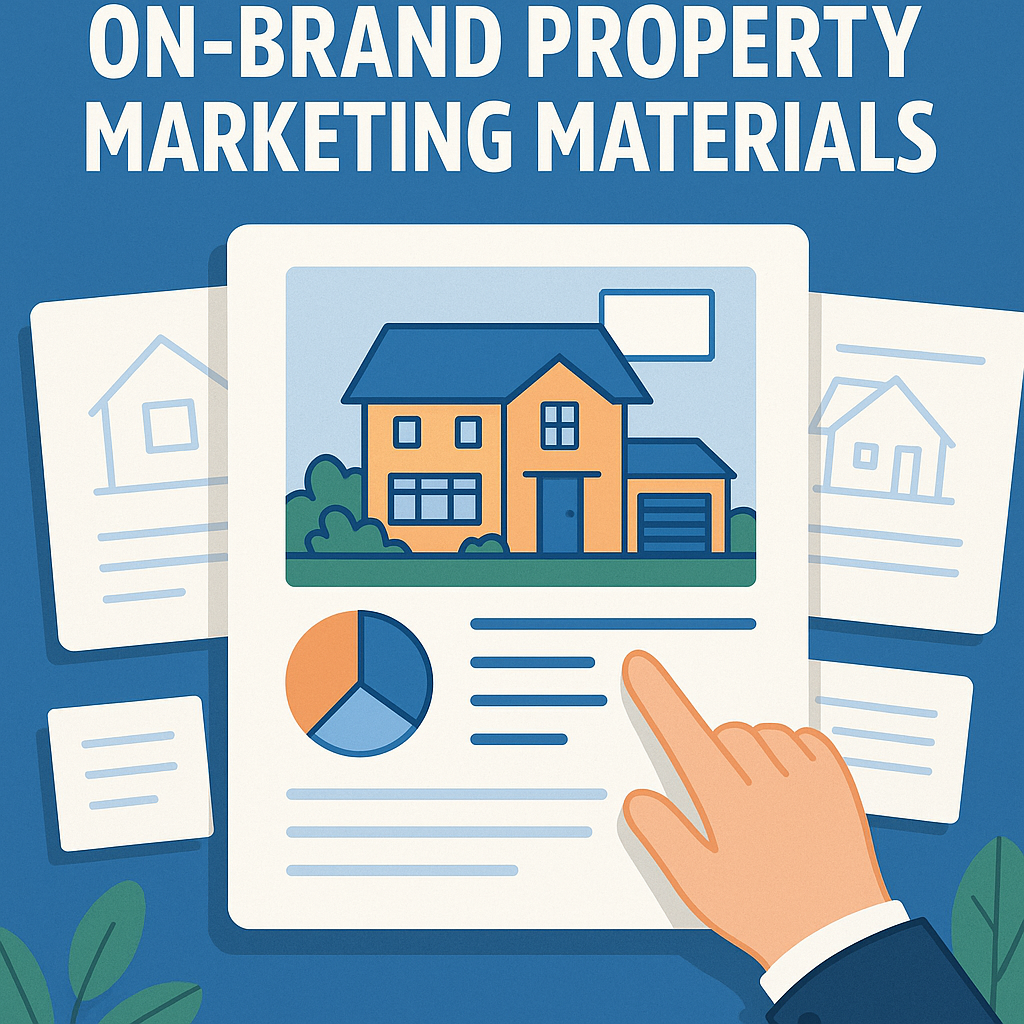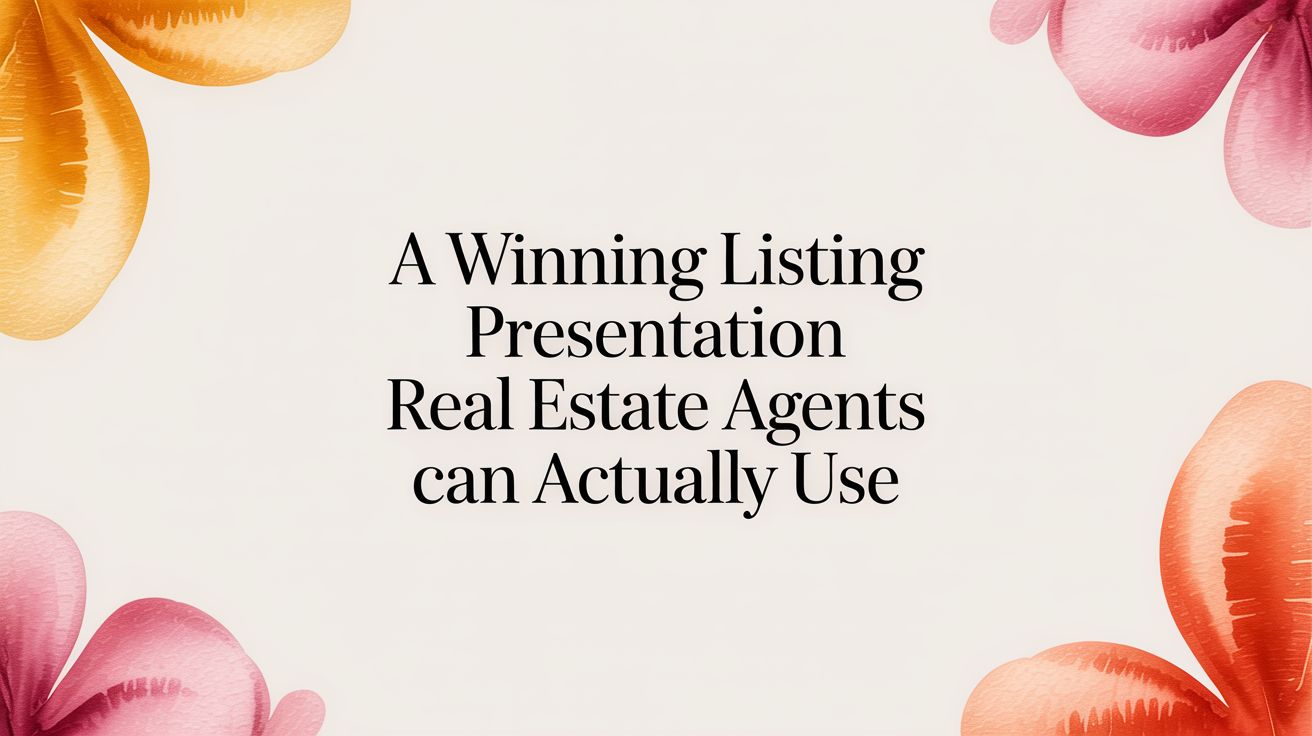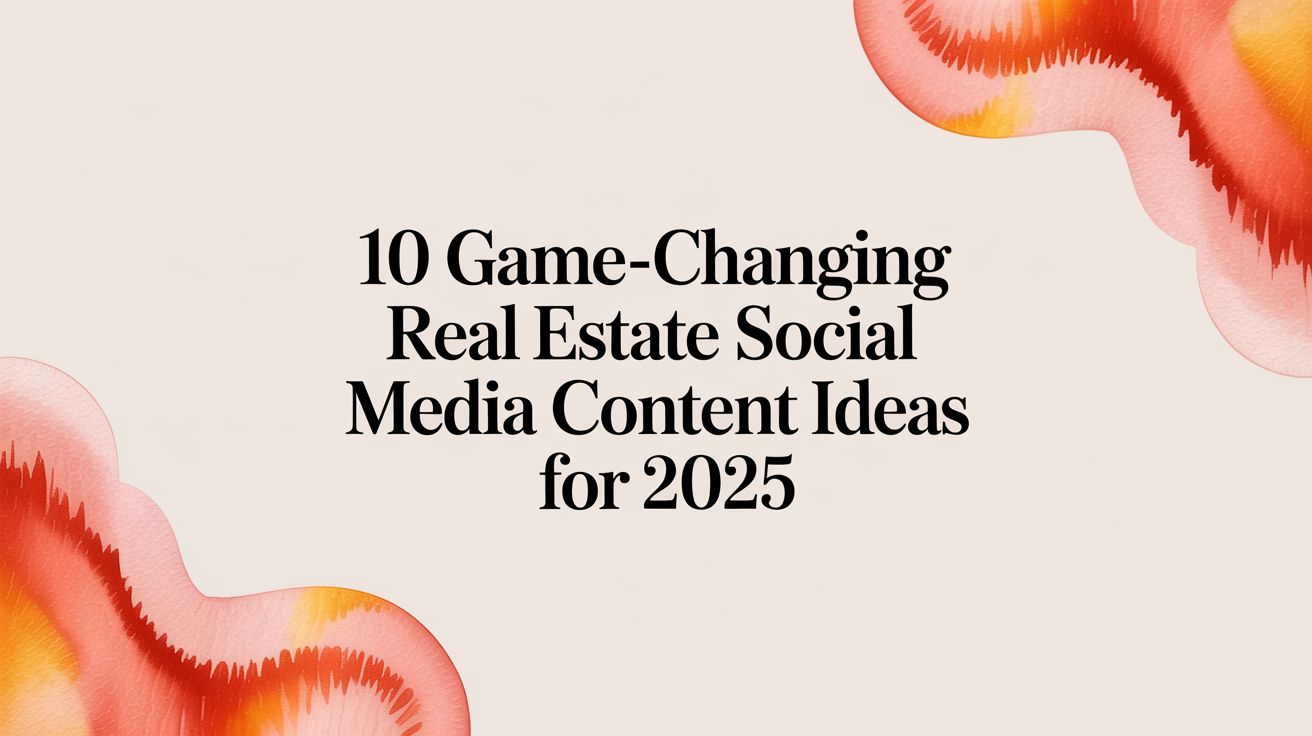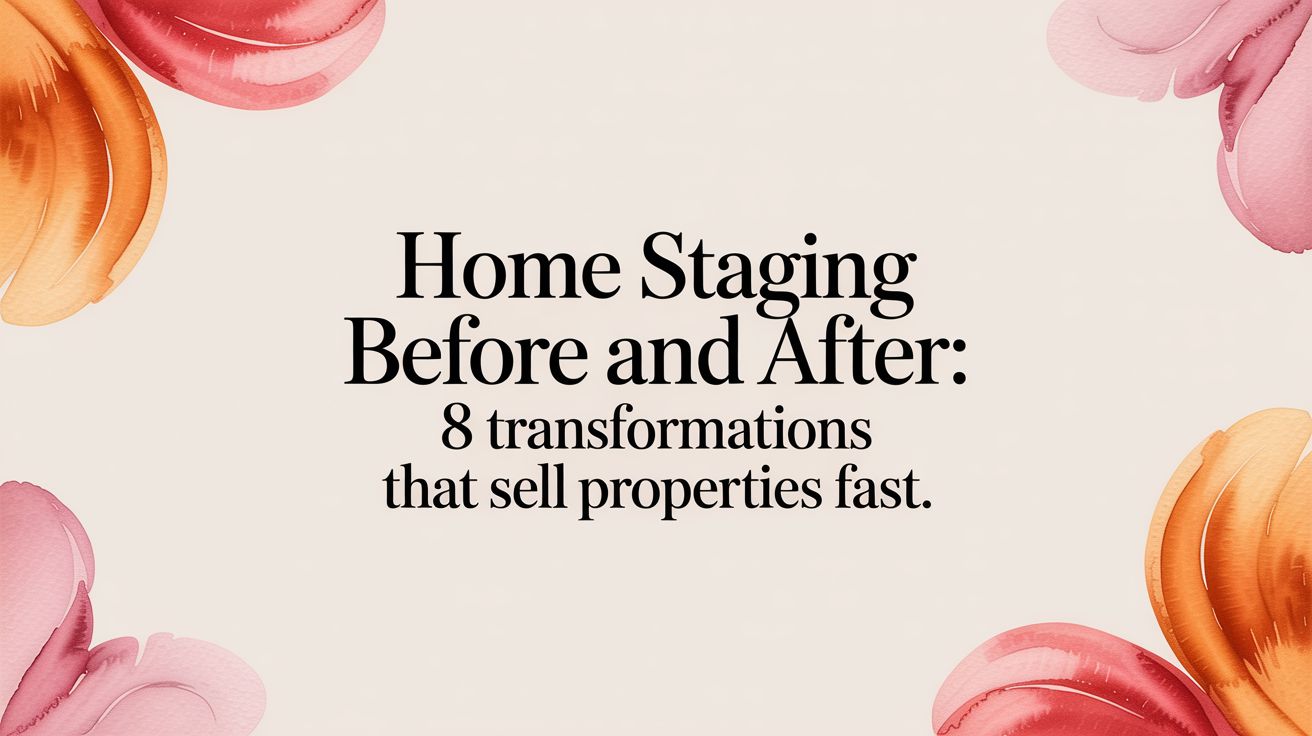Real estate professionals often use marketing materials to promote property listings. These materials include brochures, flyers, listing webpages, and email templates.
When created consistently, these materials can reflect the professional's brand. This includes visual elements like logos and colors, as well as tone, messaging, and layout.
On-brand marketing materials help align every touchpoint with the agent's or brokerage's identity. This guide explores the components, design steps, and tools involved in creating them efficiently.
What Is On-Brand Property Marketing?
On-brand property marketing means creating real estate marketing materials that match your brand identity. This covers everything from the colors and fonts you use to your messaging style.
For real estate agents, this consistency ensures that whether a client sees your business card, property flyer, or social media post, they immediately recognize it as yours. Think of it as your professional fingerprint that appears on everything you create.
According to the National Association of Realtors, consistent branding helps clients feel more confident in an agent's professionalism. When your materials look polished and cohesive, buyers and sellers tend to perceive both you and your listings more favorably.
- Brand recognition: Consistent visuals help clients remember you in a crowded market
- Professional impression: Well-branded materials signal attention to detail
- Trust building: Cohesive branding suggests reliability and expertise
Why Consistency In Visual Identity Matters
Visual consistency is about using the same design elements across all your marketing materials. When clients see the same colors, fonts, and logo style repeatedly, they start to associate these elements with you.
This consistency creates a mental shortcut. Instead of having to read your name on every piece, clients can instantly recognize your materials by their look and feel. This recognition builds familiarity, which is the foundation of trust.
Inconsistent branding, on the other hand, can confuse clients. If your business card is sleek and modern while your property flyers look traditional, it sends mixed messages about who you are as a professional.
![Example of consistent vs. inconsistent branding across materials]
Essential Types Of Property Marketing Materials
A complete marketing toolkit helps you promote properties effectively at every stage. Each type of material serves a different purpose but should follow your brand guidelines.
1. Property Brochures
Property brochures provide detailed information about a listing. They typically include multiple high-quality photos, floor plans, and comprehensive descriptions of features and amenities.
Effective brochures balance visual appeal with informative content. They use consistent headings, organized layouts, and your brand colors throughout. The goal is to give potential buyers an in-depth look at the property while reinforcing your professional identity.
2. Listing Flyers
Flyers are single-page highlights of a property, perfect for open houses or quick distribution. Unlike brochures, they focus on capturing attention with a strong headline, eye-catching photos, and just enough information to generate interest.
Your flyers should use the same color scheme, font styles, and logo placement as your other materials. This consistency helps reinforce your brand even in this simplified format.
3. Digital Templates
Digital templates include email layouts, social media graphics, and virtual tour frameworks. These templates save time by providing a pre-designed structure that you can update for each new listing.
For example, an email template might include your logo in the header, your contact information in the footer, and a consistent layout for property details in between. This makes creating new marketing materials faster while maintaining your brand identity.
Material Type
Best Used For
Key Branding Elements
Brochures
Detailed property showcase
Logo, color scheme, typography, photo style
Flyers
Quick property highlights
Consistent header design, logo placement, color accents
Digital Templates
Ongoing communication
Standardized layouts, signature style, recurring visual elements
Steps To Design Effective On-Brand Materials
Step 1: Create Simple Brand Guidelines
Brand guidelines don't have to be complicated. Even a one-page document that outlines your core visual elements can help maintain consistency.
Your guidelines should include:
- Your logo and how to use it (minimum size, spacing around it)
- Your color palette (primary and secondary colors with their codes)
- Your chosen fonts (typically one for headings and one for body text)
- Your photography style (bright and airy? warm and inviting?)
These guidelines serve as your reference point whenever you create new materials.
Step 2: Choose Colors That Reflect Your Brand
Colors evoke emotions and communicate values without words. In real estate, blues often suggest trustworthiness, while greens can represent growth or new beginnings.
Select 2-3 main colors that reflect your personal brand. Use these consistently across all materials, with your primary color for major elements and secondary colors for accents and highlights.
Remember that simplicity works best. Too many colors can make your materials look busy and unprofessional.
Step 3: Use High-Quality, Consistent Photography
Photography is especially important in real estate marketing. Poor quality or inconsistent photo styles can undermine even the best branding efforts.
For property photos, aim for:
- Consistent lighting (bright and natural works best)
- Similar composition across properties
- Professional editing that enhances without distorting
Your personal headshot should also match the style and quality of your property photography. This creates a cohesive look across all your marketing materials.
Step 4: Design With Clear Hierarchy
Good design guides the viewer's eye to the most important information first. This is called visual hierarchy, and it's crucial for effective marketing materials.
For property materials, the hierarchy typically follows this pattern:
- Property photo or headline (captures attention)
- Key selling points (builds interest)
- Property details (provides information)
- Your contact information (enables action)
Using consistent sizing, spacing, and positioning for these elements helps reinforce your brand while making your materials easy to navigate.
How To Prioritize Your Marketing Materials
Not all marketing materials are equally important. Start with the essentials and expand as needed.
For most real estate professionals, the core materials include:
- Property brochures for active listings
- Business cards for networking
- Email templates for client communication
Once these basics are in place, you can add:
- Social media templates
- Digital newsletters
- Virtual tour frameworks
The key is to ensure that each new addition follows your brand guidelines, building a cohesive collection over time.
DIY vs. AI-Powered Creation Tools
Creating on-brand materials traditionally required either design skills or hiring a professional. Today, there's a third option: AI-powered creation tools.
The DIY approach gives you complete control but demands time and some design knowledge. You'll need to learn software like Canva or Adobe, create templates from scratch, and manually apply your branding to each new piece.
AI tools like Bounti offer a faster alternative. These platforms can generate professionally designed, on-brand materials in minutes rather than hours. They maintain consistency automatically by applying your brand elements to pre-designed templates.
Approach
Time Investment
Learning Curve
Consistency
DIY Design
High
Steep
Depends on skill
Professional Designer
Medium
Low
High but expensive
AI Tools (like Bounti)
Low
Minimal
High and automated
How AI Tools Streamline On-Brand Marketing
AI-powered platforms are changing how real estate professionals create marketing materials. These tools combine design expertise with automation to produce consistent, professional results quickly.
Here's how they work: You input your brand elements once—your logo, colors, fonts, and preferences. The AI then applies these elements consistently across all materials you create, from property brochures to social media posts.
For busy real estate professionals, this automation eliminates hours of repetitive design work. Instead of recreating your branding for each new listing, you can focus on highlighting the property's unique features while the AI handles the design consistency.
Bounti specifically addresses this need by combining AI efficiency with real estate expertise. The platform understands the specific requirements of property marketing materials and generates them with your branding automatically applied.
Best Practices For Implementation
Creating on-brand materials is an ongoing process. These practices help maintain consistency as your marketing evolves:
Start with templates: Build a template for each type of material you use regularly. This provides a consistent starting point for new listings.
Create a brand folder: Keep all your brand assets (logo files, color codes, fonts) in one accessible location so they're easy to find when needed.
Review regularly: Schedule quarterly reviews of your marketing materials to ensure they remain consistent with your brand guidelines.
Seek feedback: Ask colleagues or clients what they notice about your materials. Their observations can help identify inconsistencies you might miss.
Update gradually: When you decide to refresh your branding, implement changes systematically across all materials rather than piecemeal.
Elevate Your Marketing With Consistency
Consistent, on-brand marketing materials create a professional impression that stands out in the competitive real estate market. They help clients recognize and remember you while building trust in your expertise.
Whether you choose to design materials yourself or leverage AI tools like Bounti, the key is maintaining visual and messaging consistency across everything you create. This consistency transforms individual marketing pieces into a cohesive brand experience.
For real estate professionals looking to save time while maintaining brand standards, platforms like Bounti offer an efficient solution. By automating the design process while preserving your unique brand identity, these tools help you create professional materials for every listing without starting from scratch each time.
Try Bounti to see how AI can streamline your property marketing while maintaining your brand standards.
FAQs About On-Brand Property Marketing Materials
How can I create a consistent brand if I'm not a designer?
Start with simple elements like a consistent color palette and font pair. Templates and AI tools like Bounti can handle the more complex design aspects while maintaining your basic brand elements.
What are the most important elements to keep consistent across materials?
Focus on your logo, color scheme, typography, and photography style. These visual elements create the strongest brand recognition when used consistently.
How do I balance my personal branding with my brokerage's requirements?
Work within your brokerage's guidelines while adding personal touches through consistent color accents, photo styles, or messaging approaches that make your materials distinctly yours.
When should I consider refreshing my brand and marketing materials?
Consider a refresh if your current materials look dated, don't represent your current business focus, or aren't performing well with your target audience. Most successful brands evolve subtly every few years.






